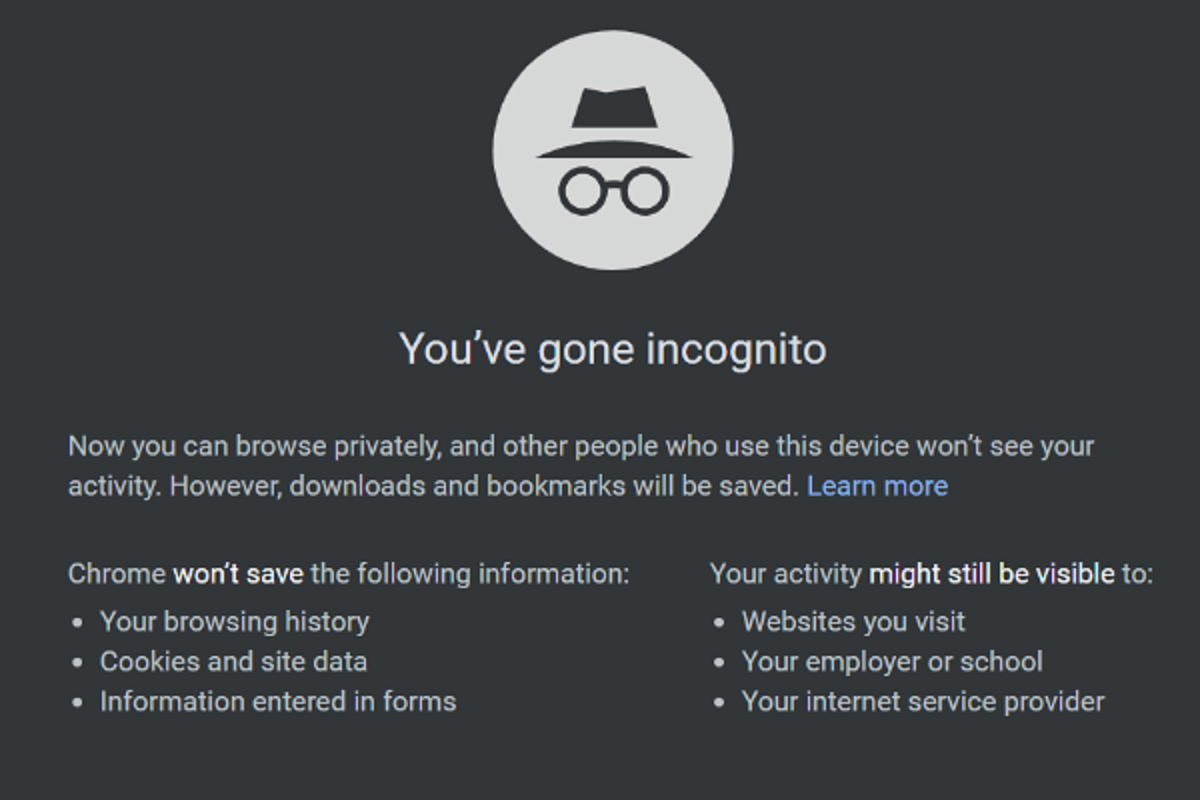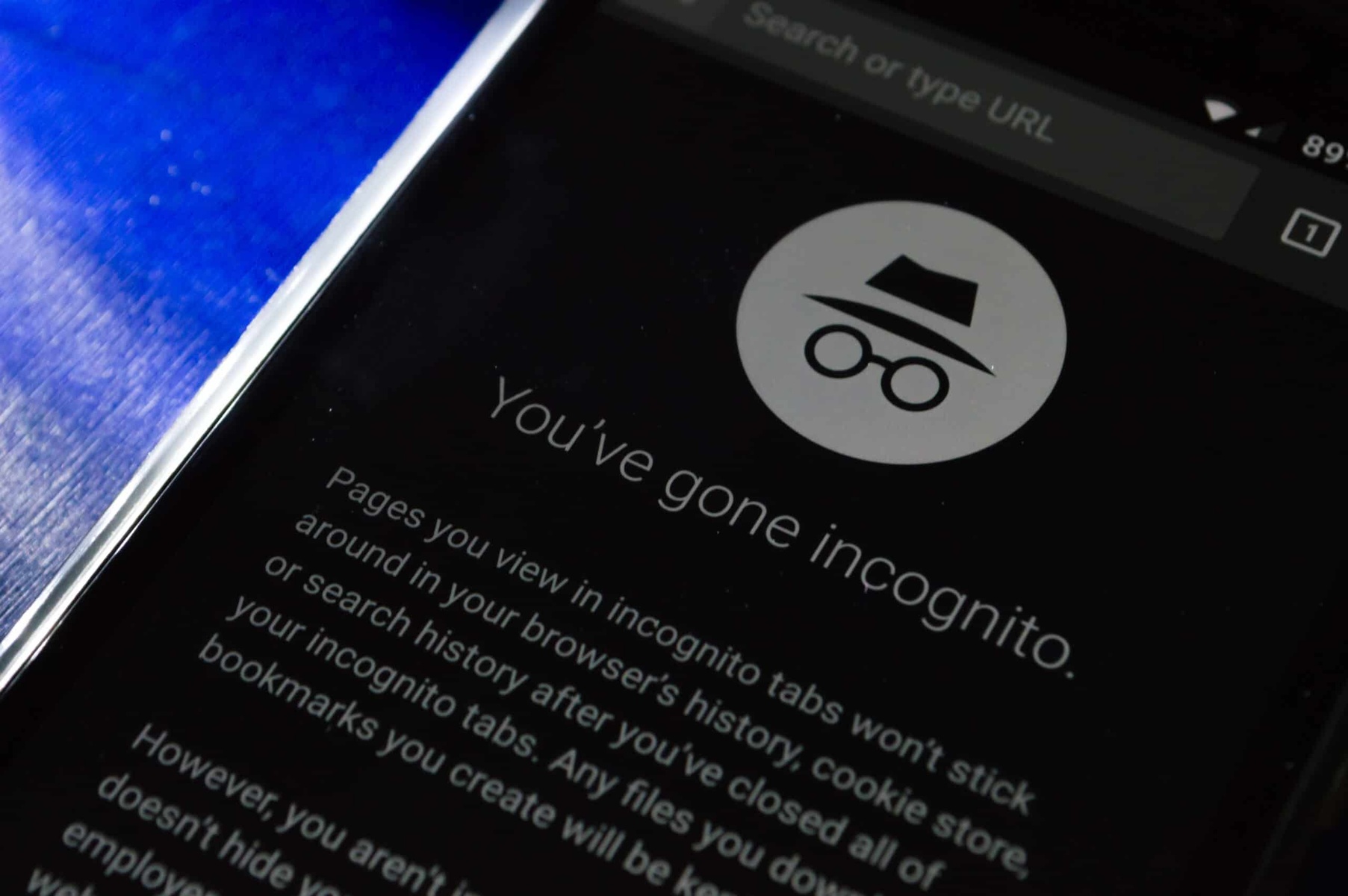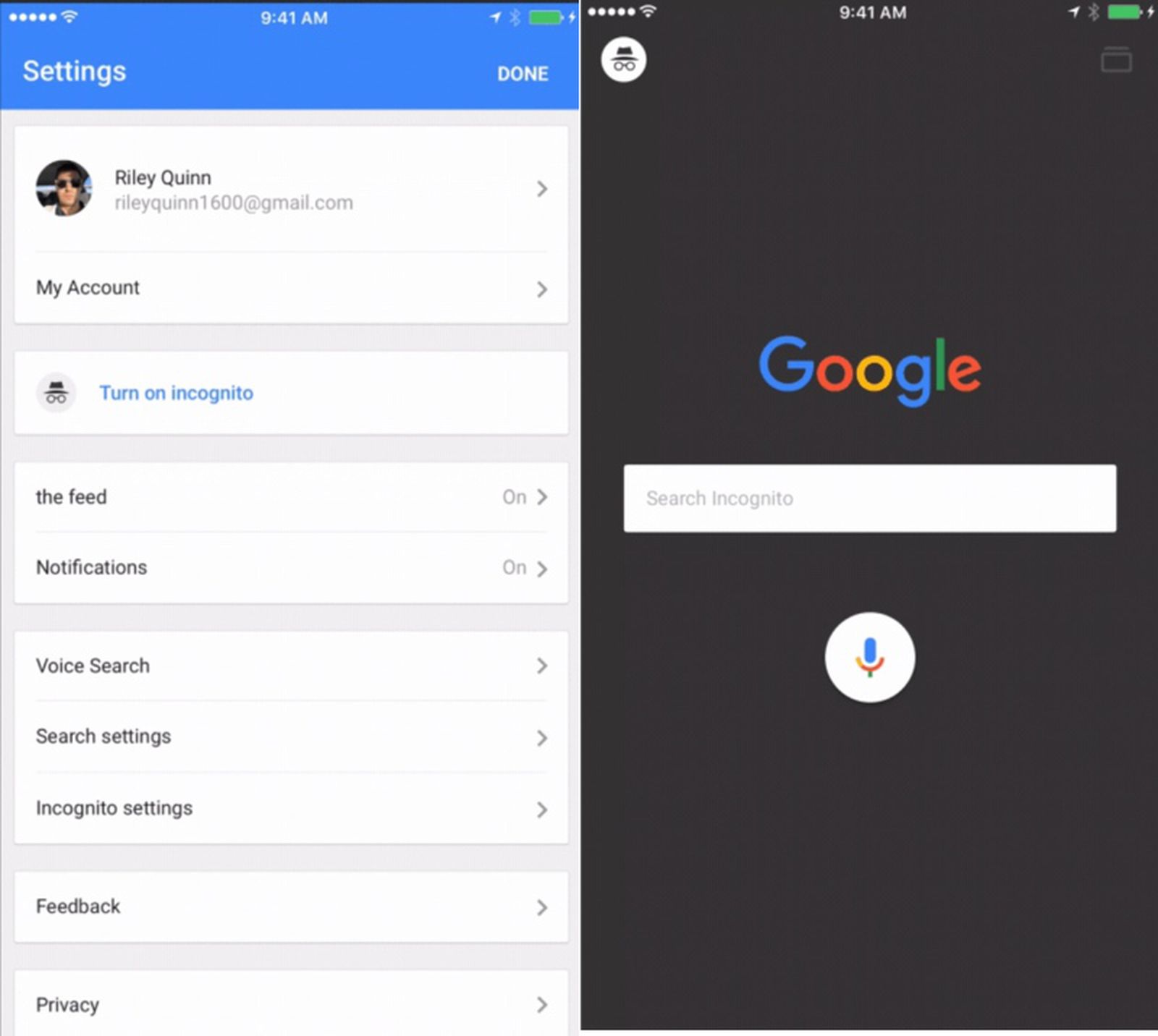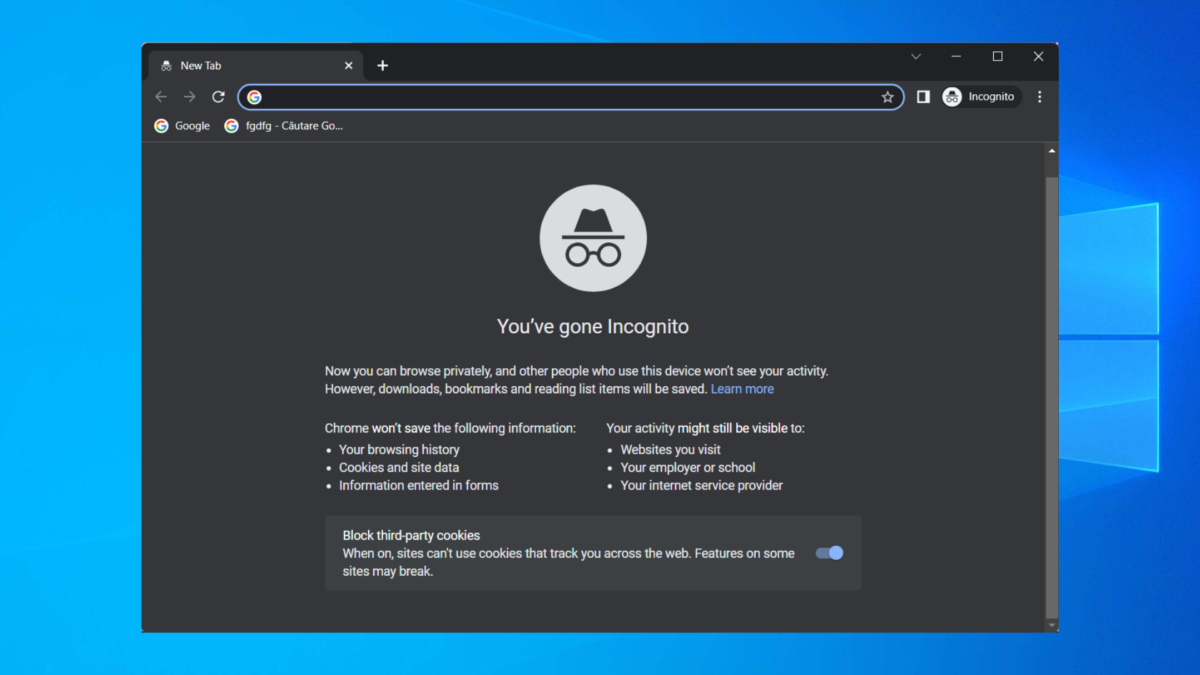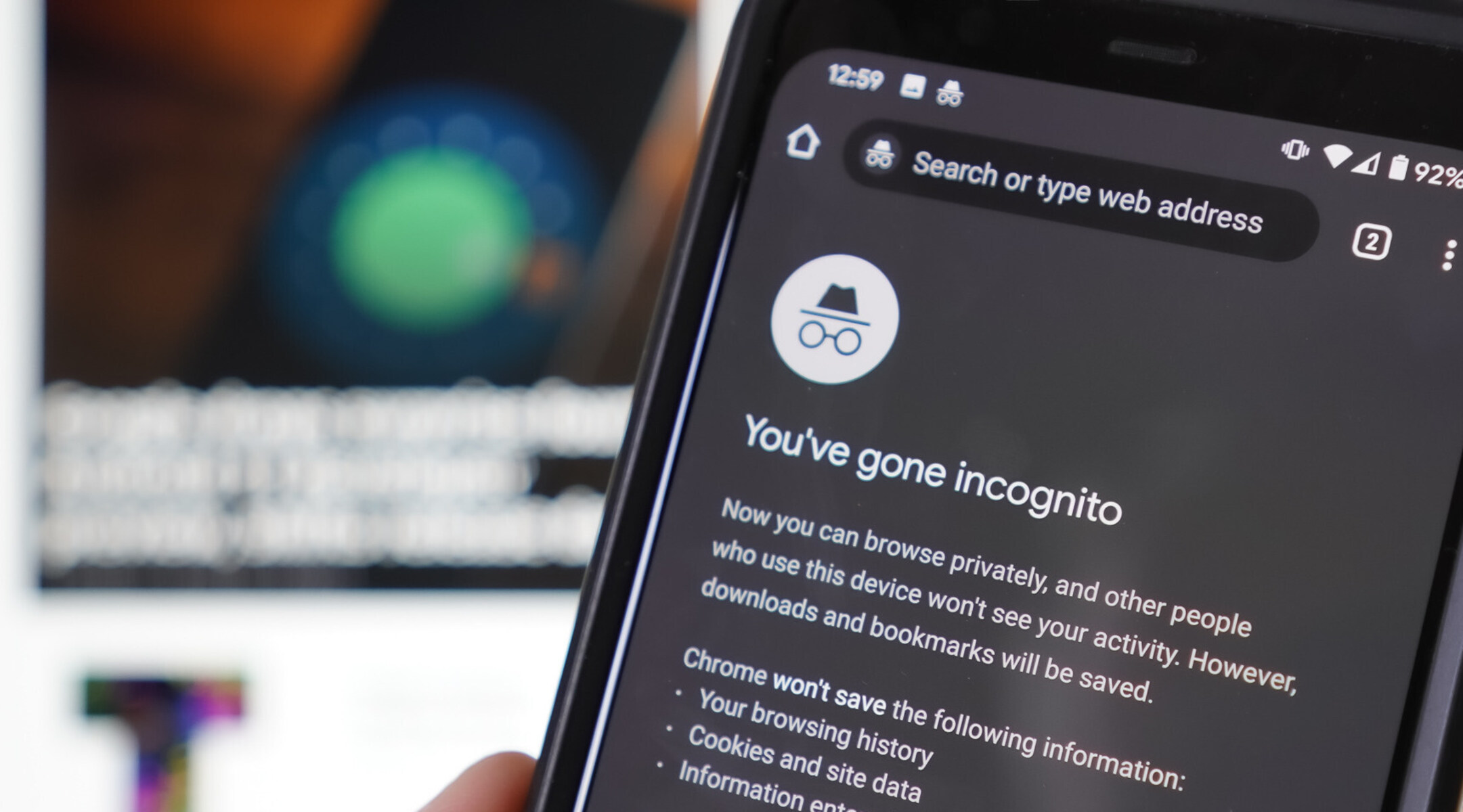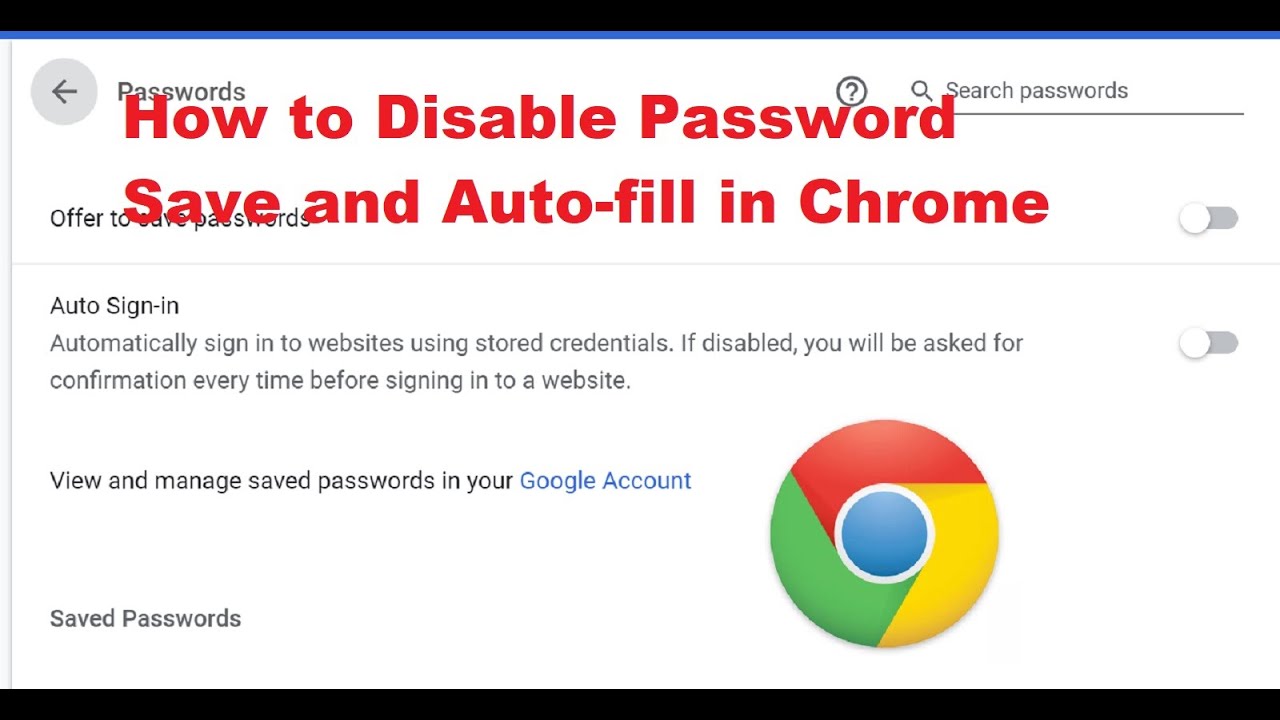Introduction
Welcome to the world of browsing in stealth mode with Google Chrome’s Incognito Mode. Have you ever wondered what this mysterious feature is all about? In simple terms, Incognito Mode allows you to surf the web without leaving a trace of your browsing history, cookies, or site data on your device. It’s like wearing an invisible cloak while you explore the internet.
While Incognito Mode provides users with a sense of privacy and anonymity, there may be instances when you want to disable it. Perhaps you want to save your browsing history, bookmark pages, or allow websites to remember your login credentials. Whatever the reason may be, we’ve got you covered with several methods on how to turn off Incognito Mode in Google Chrome.
In this article, we’ll explore different approaches to disable Incognito Mode, whether you’re using Chrome on Windows or Mac. From simple settings adjustments to using third-party extensions and advanced techniques, you’ll find the method that suits your needs.
So, without further ado, let’s dive into the world of Incognito Mode and learn how to regain control over your browsing privacy and preferences.
What is Incognito Mode?
Before we delve into how to turn off Incognito Mode in Google Chrome, let’s first understand what exactly Incognito Mode is and how it works.
Incognito Mode, also known as private browsing, is a feature in Google Chrome that enables users to browse the internet without leaving any trace of their online activities on their device. When you open a new Incognito window, Chrome operates in a temporary session that does not retain any browsing history, cookies, or site data.
This means that any websites you visit in Incognito Mode won’t appear in your browsing history, and any forms you fill out or passwords you enter won’t be stored. Additionally, Chrome won’t save any cookies, which are small files that websites use to remember your preferences or track your activities.
While Incognito Mode is useful for various scenarios, it’s important to note that it does not make you completely anonymous or invisible on the internet. Your internet service provider (ISP), the websites you visit, and other parties may still be able to track your online activities.
Incognito Mode is particularly helpful in situations where you want to:
- Browse the web without saving any traces of your online activities on your device.
- Share a computer with others and keep your browsing sessions private.
- Sign in to multiple accounts on the same website simultaneously.
- View content or access websites that have usage restrictions or paywalls.
- Prevent certain websites from tailoring their content or ads based on your browsing history.
Now that we have a clear understanding of what Incognito Mode is and its benefits, let’s explore how to disable it in Google Chrome.
Why would you want to turn off Incognito Mode?
While Incognito Mode offers a range of benefits, there are several reasons why you might want to turn it off at times. Let’s explore some of the common scenarios where disabling Incognito Mode can be useful.
1. Saving browsing history: By default, Chrome doesn’t save your browsing history in Incognito Mode. However, there may be instances when you want to revisit a previously visited website or easily locate a useful webpage you stumbled upon. Disabling Incognito Mode allows Chrome to retain your browsing history, making it easier for you to revisit websites or access important information.
2. Bookmarking pages: Incognito Mode doesn’t retain any bookmarks, making it challenging to save and organize your favorite websites. By disabling Incognito Mode, you can easily bookmark pages, create folders for better organization, and access your bookmarks across devices.
3. Logging in to websites: Incognito Mode prevents websites from remembering your login information, as it doesn’t save any cookies or site data. Disabling Incognito Mode allows you to sign in to websites and have your login credentials remembered, providing a more convenient and seamless browsing experience.
4. Allowing websites to remember preferences: Some websites utilize cookies and site data to remember your preferences, such as language settings or personalized recommendations. If you find that certain websites are not functioning optimally in Incognito Mode, disabling it can enable the sites to remember your preferences and provide a better user experience.
5. Website restrictions: Certain websites impose restrictions or paywalls that limit access to their content based on browsing history or cookie data. By turning off Incognito Mode, you can bypass these restrictions and gain access to the full range of content or services offered by the website.
6. Clearing site data: While Incognito Mode automatically clears your browsing history and site data when you close the window, there may be instances when you want to selectively clear specific site data without closing the entire Incognito session. Disabling Incognito Mode allows you to access Chrome’s settings and clear site data for specific websites.
These are just a few examples of why you might want to turn off Incognito Mode in Google Chrome. By doing so, you can regain control over your browsing history, enhance convenience, and access the full range of features offered by Chrome.
Method 1: Using the Chrome Settings
One of the simplest ways to turn off Incognito Mode in Google Chrome is by making adjustments in the Chrome settings. Follow these steps:
1. Open Google Chrome on your device.
2. Click on the three-dot menu icon in the top-right corner of the browser window. This will open a dropdown menu.
3. From the dropdown menu, select “Settings.”
4. In the Settings tab, scroll down and click on “Privacy and security” in the left-hand sidebar.
5. Under “Privacy and security,” you will find the “More” section. Click on “More” to expand the options.
6. Look for the “Incognito mode” option. By default, it is turned on and indicated by a blue toggle switch.
7. To disable Incognito Mode, simply click on the blue toggle switch. It will turn gray, indicating that Incognito Mode is now turned off.
8. Once you have disabled Incognito Mode, you can close the Settings tab, and future browsing sessions will not be in Incognito Mode.
It’s important to note that disabling Incognito Mode through the Chrome settings is a global setting. This means that it will apply to all future browsing sessions. If you want to re-enable Incognito Mode in the future, simply follow the same steps and toggle the switch back to the blue “On” position.
This method allows you to quickly and easily turn off Incognito Mode without the need for any additional tools or extensions. It’s a straightforward approach that gives you control over your browsing preferences and allows Chrome to save your browsing history, site data, and other settings as desired.
Method 2: Using the Incognito This! Extension
If you prefer a more flexible and convenient way to turn off Incognito Mode in Google Chrome, you can use the Incognito This! extension. This extension provides a simple and quick method to enable or disable Incognito Mode with just a couple of clicks. Follow these steps:
1. Open the Chrome browser on your computer.
2. In a new tab, visit the Chrome Web Store by entering “chrome.google.com/webstore” in the address bar and pressing Enter.
3. In the search bar, type “Incognito This!” and press Enter.
4. From the search results, click on the Incognito This! extension.
5. On the extension page, click on the “Add to Chrome” button to install it.
6. After installation, the extension icon will appear next to the address bar (typically located in the top-right corner).
7. To turn off Incognito Mode, simply click on the Incognito This! extension icon.
8. A popup window will appear, indicating that Incognito Mode is disabled. You will also see a notification in the browser tab, confirming that you are no longer browsing in Incognito Mode.
9. To re-enable Incognito Mode, click on the Incognito This! extension icon again. The popup window will now indicate that Incognito Mode is enabled.
By using the Incognito This! extension, you can easily switch between browsing in Incognito Mode and regular browsing without having to navigate through Chrome settings. This can be particularly useful if you frequently switch between private and non-private browsing sessions or if you prefer a more visual and accessible way to enable or disable Incognito Mode.
Remember that extensions can vary in functionality and compatibility, so it’s important to choose a reputable extension from the Chrome Web Store.
Method 3: Using the Group Policy Editor (Windows Only)
If you’re using Google Chrome on a Windows computer, you can disable Incognito Mode by making changes in the Group Policy Editor. The Group Policy Editor is a powerful tool that allows administrators to manage and control various settings in Windows. Follow these steps to disable Incognito Mode:
1. Press the Windows key + R on your keyboard to open the Run dialog box.
2. Type “gpedit.msc” in the Run dialog box and click “OK” to open the Group Policy Editor.
3. In the Group Policy Editor window, navigate to the following path:
Computer Configuration > Administrative Templates > Google > Google Chrome
4. Under the Google Chrome folder, you will see a list of policies on the right-hand side. Look for the policy titled “Incognito mode availability.”
5. Double-click on the “Incognito mode availability” policy to open the settings.
6. In the policy settings window, select the “Disabled” option.
7. Click “OK” to save the changes.
8. Close the Group Policy Editor.
Once you have completed these steps, Incognito Mode will be disabled in Google Chrome on your Windows computer. Any attempts to open a new Incognito window will be blocked, and the option to open Incognito Mode will no longer be available in the Chrome menu.
It’s important to note that the Group Policy Editor is only available in Windows Pro, Enterprise, and Ultimate editions. If you’re using a different edition of Windows, such as Windows Home, you won’t have access to this feature. Additionally, modifying the Group Policy settings requires administrative privileges.
If you want to re-enable Incognito Mode in the future, you can follow the same steps and select the “Not configured” or “Enabled” option in the “Incognito mode availability” policy.
The Group Policy Editor provides a more advanced method to disable Incognito Mode, particularly for system administrators or individuals who want to enforce strict browsing policies on a Windows computer.
Method 4: Using the Terminal (Mac Only)
If you’re using Google Chrome on a Mac computer, you can disable Incognito Mode by using the Terminal application. The Terminal allows you to execute advanced commands and perform system-level tasks. Follow these steps to disable Incognito Mode:
1. Open the Terminal application on your Mac. You can find it by navigating to “Applications” > “Utilities” > “Terminal.”
2. In the Terminal window, type the following command:
defaults write com.google.chrome IncognitoModeAvailability -integer 1
3. Press Enter to execute the command.
4. Restart Google Chrome for the changes to take effect.
After completing these steps, Incognito Mode will be disabled in Google Chrome on your Mac. When you try to open a new Incognito window, it will be blocked, and you won’t have access to the private browsing feature.
If you want to re-enable Incognito Mode in the future, you can use the Terminal again with the following command:
defaults write com.google.chrome IncognitoModeAvailability -integer 0
Remember to restart Google Chrome after executing the command for the changes to take effect.
Using the Terminal provides a command-line approach to disabling Incognito Mode in Google Chrome on a Mac. This method is suitable for users who are comfortable working with the Terminal and prefer a more hands-on approach to system customization.
Method 5: Using the Registry Editor (Windows Only)
For Windows users, another method to disable Incognito Mode in Google Chrome is by making changes in the Registry Editor. The Registry Editor allows you to modify settings and configurations for various aspects of the Windows operating system. Follow these steps to disable Incognito Mode:
1. Press the Windows key + R on your keyboard to open the Run dialog box.
2. Type “regedit” in the Run dialog box and click “OK” to open the Registry Editor.
3. In the Registry Editor window, navigate to the following path:
HKEY_LOCAL_MACHINE\SOFTWARE\Policies\Google\Chrome
Note: If the “Google” and “Chrome” folders do not exist, you may need to create them. Right-click on the “Policies” folder, select “New” > “Key,” and name it “Google.” Then, repeat the process to create a new “Chrome” key within the “Google” folder.
4. In the “Chrome” folder, right-click on the right-hand side and select “New” > “DWORD (32-bit) Value.”
5. Name the new value as “IncognitoModeAvailability” (without quotes).
6. Double-click on the “IncognitoModeAvailability” value to modify its properties.
7. In the “Value data” field, enter the number “1” to disable Incognito Mode.
8. Click “OK” to save the changes.
9. Close the Registry Editor.
After following these steps, Incognito Mode will be disabled in Google Chrome on your Windows computer. Opening a new Incognito window will no longer be possible, and the option to browse privately will be inaccessible.
If you want to re-enable Incognito Mode in the future, you can follow the same steps and change the “Value data” field to “0” or delete the “IncognitoModeAvailability” value.
Using the Registry Editor provides a more advanced method for disabling Incognito Mode, particularly for users familiar with Windows system settings and configurations.
Conclusion
In this article, we have explored different methods to turn off Incognito Mode in Google Chrome. Whether you prefer adjusting settings, using extensions, or utilizing advanced tools like the Group Policy Editor or Terminal, there is a method suitable for your needs.
Disabling Incognito Mode allows you to save browsing history, bookmark pages, remember login information, and access websites without restrictions. It gives you more control over your browsing experience and enables you to tailor Chrome’s behavior to your preferences.
Method 1, using the Chrome Settings, provides a simple and straightforward approach accessible to all users. Method 2, using the Incognito This! extension, offers a convenient way to toggle Incognito Mode on and off with a single click.
For Windows users, Method 3 demonstrates how to disable Incognito Mode using the Group Policy Editor, while Method 5 showcases the Registry Editor as an option. Mac users can utilize Method 4, which involves using the Terminal to modify settings.
It’s important to note that while these methods effectively disable Incognito Mode, they do not guarantee complete privacy or prevent other forms of tracking. ISPs, websites, and other parties may still be able to monitor your online activities.
Choose the method that aligns best with your preferences and operating system, and enjoy browsing the web with or without the protective cloak of Incognito Mode.







